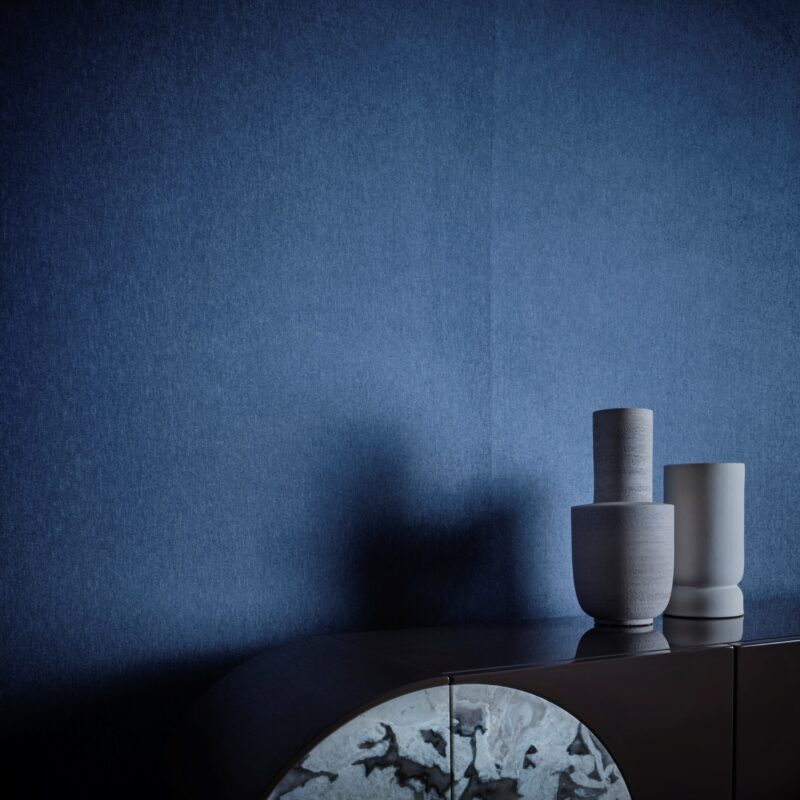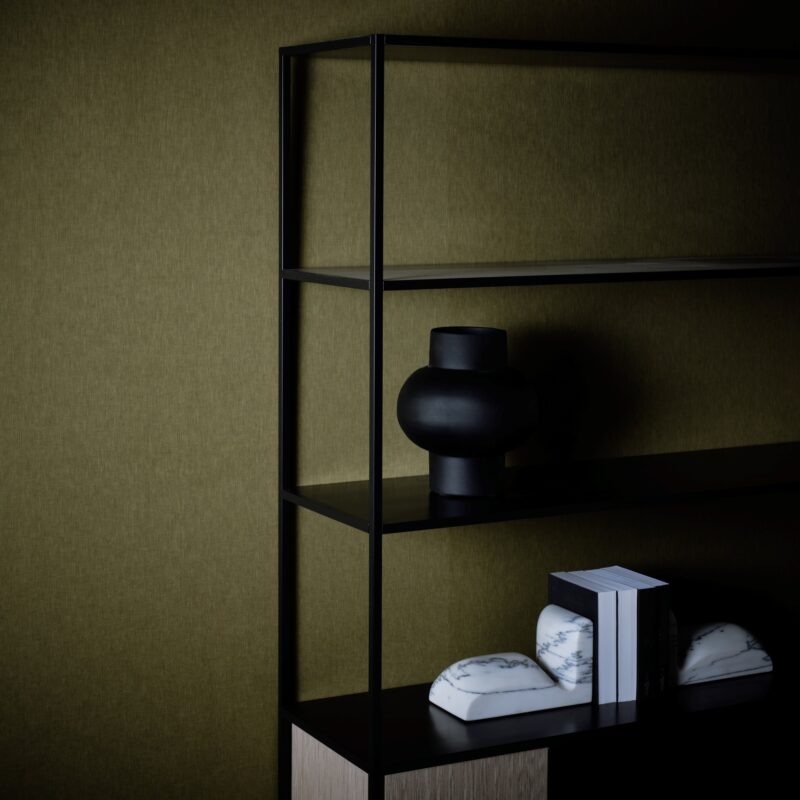NEWS & ACTIVITIES

Sustainable wallpaper: from trend to the new normal
08 November 2023
The demand for sustainable wallpaper has increased in recent years and will only continue to grow. More and more consumers are aware of the environmental impact of their purchases, including in the area of interior decoration. This presents challenges but also opportunities for interior professionals.
Much wallpaper is still far from sustainable, while there are also ecologically responsible options on the market. With environmentally conscious material choices, production, and delivery, interior professionals can stand out and make an impact—for their clients and for the planet.
In this article, we delve into developments in the field of sustainable wallpaper. We discuss the benefits and impact, and we look at trends to respond to. Of course, we’ll also present DWC’s sustainable wallcoverings. Are you ready for the interior of the future?
A shift in the world of interior design
For a long time, sustainability was nothing more than a hype—a ‘nice bonus’ for wealthy clients. Except for a small group of environmentally conscious consumers, it was only an option as long as it didn’t cost more time or money than polluting alternatives.
More often, the environmental impact wasn’t considered at all, with neither the consumer nor the interior designer giving much thought to sustainable alternatives. That has changed.
The new normal
The interior design world is increasingly committed to sustainability. This is partly because many clients are explicitly looking for ecologically responsible interior solutions. On the other hand, some interior professionals and producers play a pioneering role and choose to limit their environmental impact on their own initiative.
This change fuels new developments and initiatives in sustainability. Eco-friendly options are becoming more common, cheaper, and more accessible—making it increasingly attractive to choose a ‘green’ interior.
How harmful is wallpaper to the planet?
You might not immediately realize it, but wallpaper and other forms of wallcovering have a significant impact on the planet. The wallpaper industry is harmful to the environment in several ways. Things often already go wrong with material choices, but many other factors can also be damaging.
Depletion of natural resources
The raw materials for wallpaper, such as wood pulp and cotton, are often extracted irresponsibly. This can lead to deforestation, land degradation, and biodiversity loss, with potentially catastrophic consequences for humans and animals.
Emissions during production and delivery
A lot of energy and water is used during the production process. Moreover, manufacturing facilities emit excessive amounts of CO₂ and other harmful substances. Since many production facilities are far from the market (e.g., in India), shipping wallpaper to suppliers also generates a lot of emissions.
Chemical substances in adhesives
Wallpaper glue often still contains so-called volatile organic compounds (VOCs). These substances evaporate quickly and are harmful to both health and the environment. Therefore, there are already legal substitution regulations for adhesives with too many VOCs—you are legally required to use environmentally friendly wallpaper glue.
Waste disposal
Much wallpaper is not biodegradable and is thus harmful to the environment when removed. It contributes to the growing landfill problem. In addition, chemicals used in the production and installation of wallpaper increase landfill toxicity, which can cause serious environmental damage.
Tips for sustainable wallpaper
There are increasing options for producing or using sustainable wallpaper in interior projects. This trend will only grow in the coming years due to rising demand and new developments.
Here’s what you can already do to make your interior more sustainable:
-
Water-based glue: To replace harmful chemicals in wallpaper glue, water-based adhesives are being used more frequently. These do not emit harmful fumes indoors and do not burden the environment.
-
Durable materials: If wallpaper needs frequent replacement, it’s taxing on the environment. Minimize this by choosing low-maintenance wallpaper with a long lifespan.
-
Efficient production: Since wallpaper production consumes a lot of energy, it’s important to make the process efficient. Use renewable energy, streamline processes, and batch orders together to reduce emissions.
-
No VOC materials: Choose wallpaper not pre-treated with harmful chemicals. Ensure natural alternatives are used, such as chemical-free flame retardants.
-
Removable wallpaper: Use wallcoverings that can be entirely removed and reused when replaced—preventing unnecessary waste.
Important certifications for sustainable wallpaper
Certified materials are a good benchmark for determining sustainable wallpaper. For paper, FSC (Forest Stewardship Council) is an important certification, indicating that the wood comes from responsibly managed forests.
GRS (Global Recycled Standard) is also a strong indicator of sustainability, as it guarantees that materials contain at least 50% recycled fibers. It also includes strict criteria on chemical use, environmental impact, and working conditions.
What is DWC doing in terms of sustainability?
As a prominent name in exclusive wallcoverings, DWC embraced sustainability early on. Beyond our eco-conscious material selection and efforts to limit our ecological footprint in production and treatment, we’ve developed a collection with sustainability at its core.
The Sustainable Botanic Harmony collection is GRS-certified and has numerous sustainable attributes:
-
The materials are low-maintenance and long-lasting
-
We use a self-developed water-based adhesive free of harmful chemicals to attach the textile to the paper backing
-
Three types of flame retardants are used—all naturally derived and free from harmful chemicals
-
Multiple orders are sewn together into a single roll to avoid restarting the production process for each order—saving energy
Discover DWC’s sustainable collection
For the Sustainable Botanic Harmony collection, we were inspired by plants and trees—a reference to the environmentally friendly nature of the fabrics. The collection perfectly demonstrates how sustainability and beauty can come together in exclusive wallpaper.
Want to reduce your impact on the planet? Choose sustainable wallpaper with the Sustainable Botanic Harmony collection. Find your favorite series and order a free sample to experience the quality of sustainability.
request a sampleCalluna
The colour shades of the Calluna (heather) are reflected in this fabric. The collection is characterised by 16 muted tones from sand beige to berry red, which are easy to combine.
Nemorosa
The spike-shaped bloom of the woodland anemone ‘Salvia nemorosa’ is echoed in the coarser woven structure. Available in 12 colours, ranging from soft earthy and neutral tones to muted sky blue.
Salvia
Salvia, or sage, is a herbaceous plant. This fabric features a fresh melange effect, fits with almost anything, and serves as a beautiful interior base. Available in 15 refined colours.




